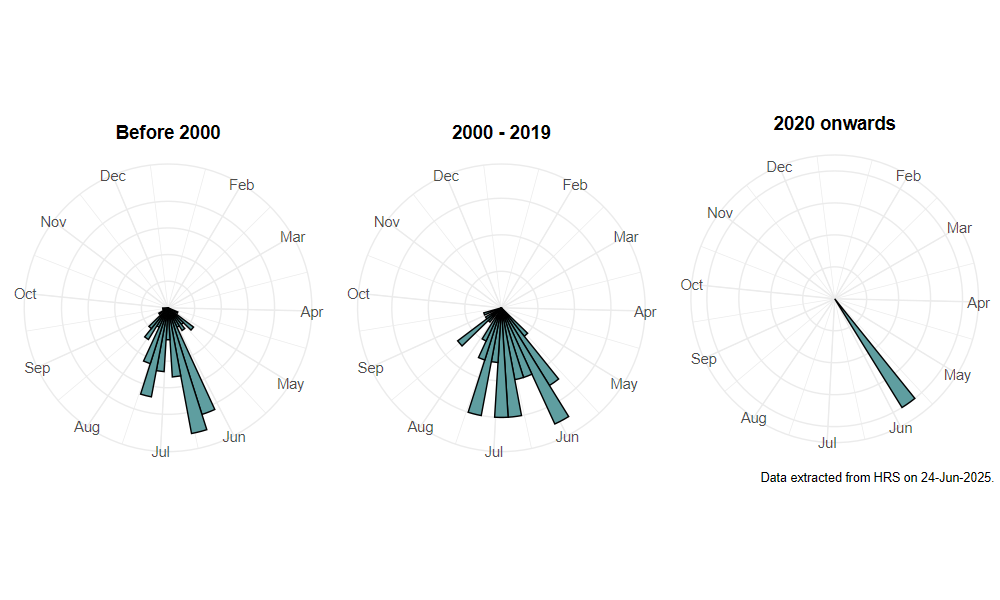Platycheirus perpallidus Verrall, 1901
Identification
Identification difficulty = 3. ![]()
![]() according to Ball & Morris, 20241
according to Ball & Morris, 20241
Biology
This is a wetland species that occurs along the margins of ditches, ponds and mires, especially where sedges Carex sp. occur in poor fen. The larva is predaceous upon the sedge aphid Trichocallis cyperi; there are also records of associations with the aphids Hyalopterus pruni on Lesser Reedmace Typha angustifolia and Subsaltusaphis rosseri on the sedge Carex rostrata. Adults seem to prefer the water-side edge of wetland vegetation.
Flight period
The following plots show the number of unique records per week excluding those reported to be of immature stages.

Status
Lower Risk (Nationally scarce) - Ball & Moris, 20142. Notable - Falk, 19913.
Distribution
This is mainly a northern and upland species that is widely distributed across Scotland and northern England, extending into Wales down to the Severn Estuary. There are no recent records south of the West Midlands, so the reduction in range appears to represent a retreat northwards. The single record from South Wiltshire in 1949 needs to be treated with caution!

Trends
The following plots show the Frescalo TFactor vs year and a map of the rescaled frequency (all records) for the species.
-
Ball, S., & Morris, R. (2024). Hoverflies of Britain and Ireland. WILDGuides (3rd ed.). Oxford: Princeton University Press. ↩
-
Ball, S., & Morris, R. (2014). A review of the scarce and threatened flies of Great Britain. Part 6: Syrphidae. ( No. 9). Species status (pp. 1–130). Peterborough: JNCC. ↩
-
Falk, S. (1991). A review of the scarce and threatened flies of Great Britain. ( No. 39). Research and Survey in Nature Conservation (pp. 1–194). Peterborough: NCC. ↩